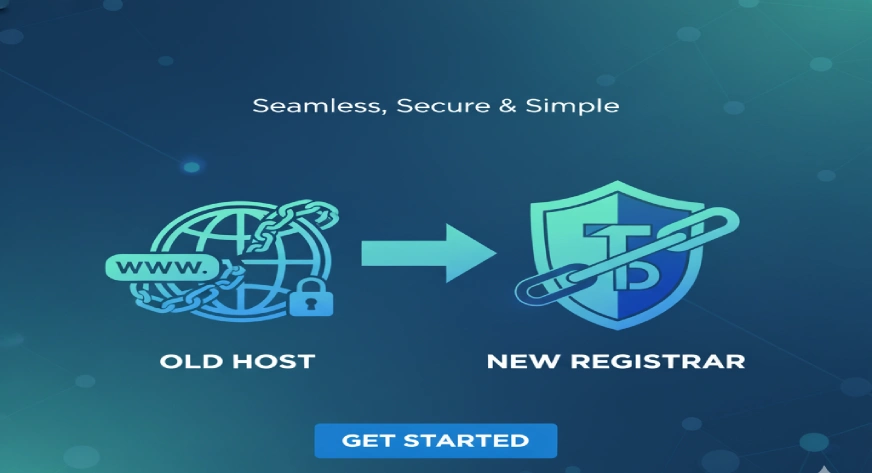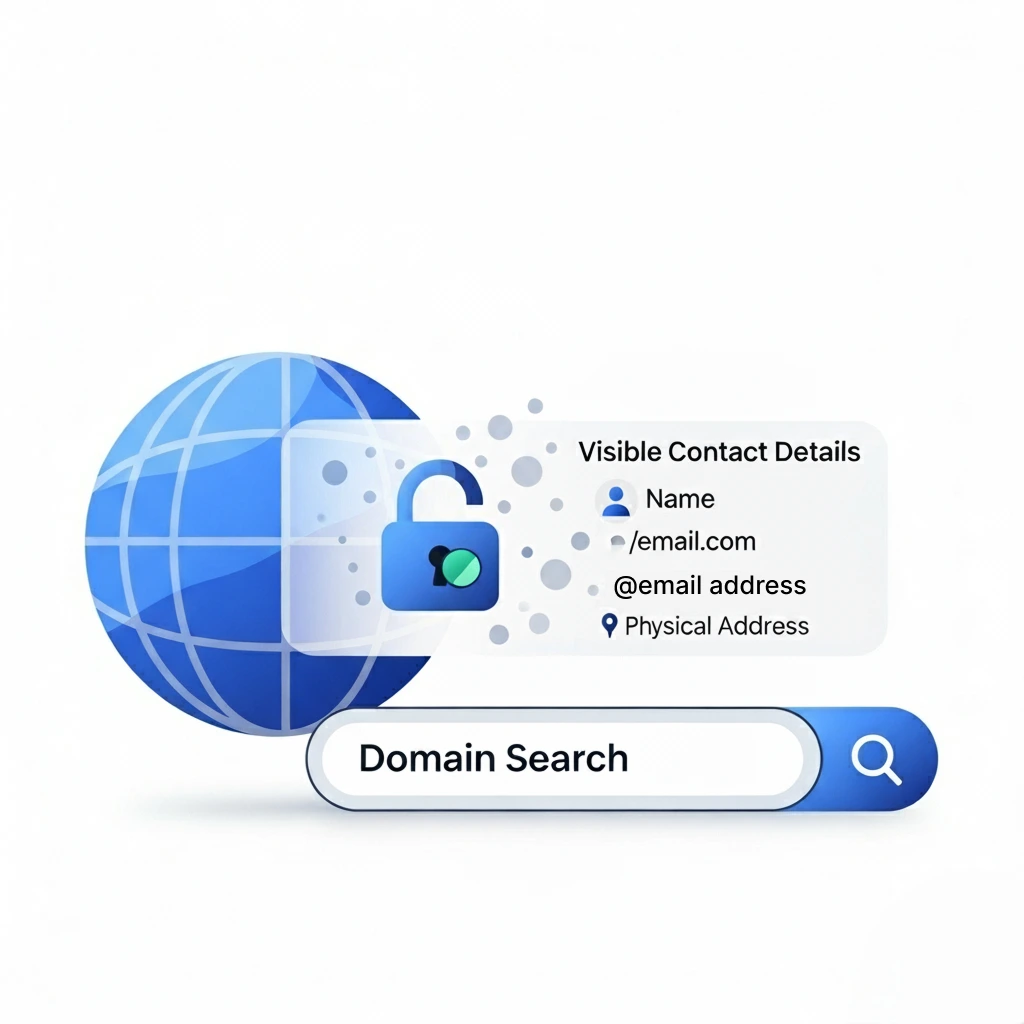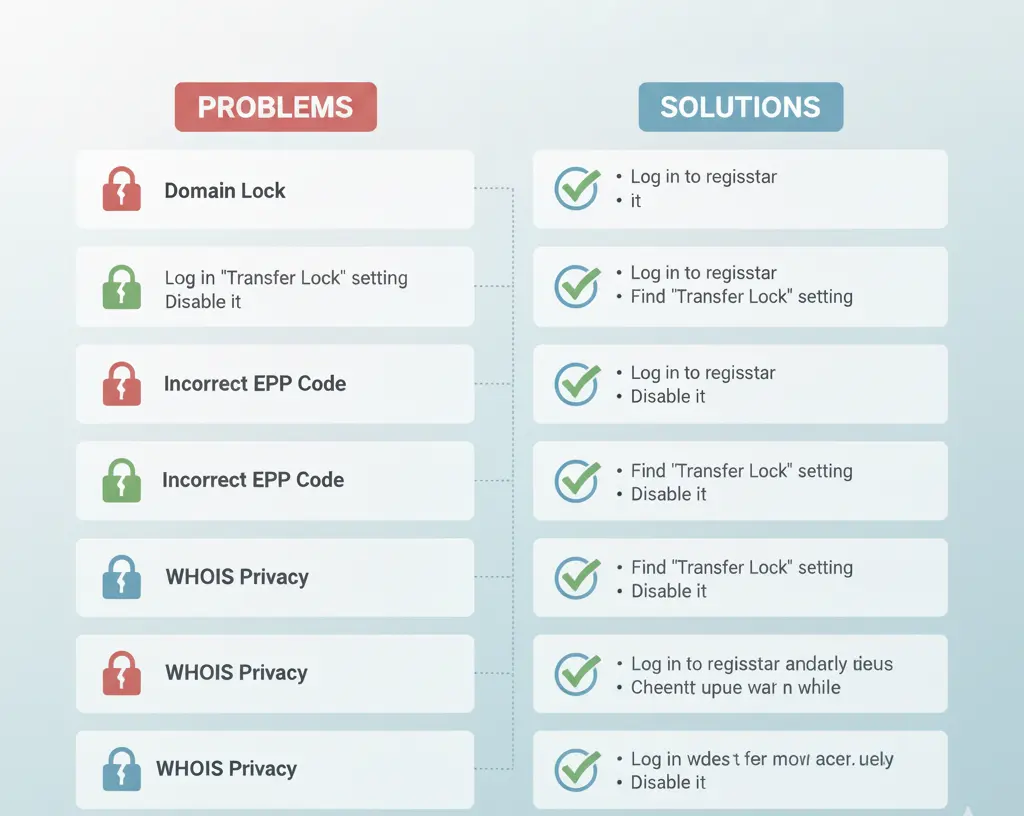How To Transfer Domain Name?

To transfer a domain name, first unlock it in your current account and get the transfer (EPP) code. Then, go to the new registrar, enter the domain name and code, and confirm the transfer through email. The process usually takes 5–7 days to finish.
Many people do this to save costs, get better support, or enjoy more features. The good news is, the process is not as complicated as it sounds. With the right steps, you can make the switch smoothly without losing your website or email access.
When Should You Think About Transferring a Domain?
Not every website owner needs to transfer their domain. But there are some clear signs when it might be the right move:
- High renewal prices: Some registrars attract you with low first-year pricing, then increase rates heavily on renewal.
- Poor support: If customer support is slow or unhelpful, managing your domain can get stressful.
- Better features elsewhere: Some registrars offer easier DNS management, free WHOIS privacy, or security features like two-factor authentication.
- Security concerns: If your current registrar feels unreliable, moving to a trusted provider is safer.
For example, many small business owners start with a registrar that’s cheap but later move to companies like Google Domains or Namecheap for reliability and better DNS tools.
Also Read, Know Which Domain is Better .Com or .In
How to Transfer a Domain Name?
Moving your domain might sound complicated, but when you break it down into steps, it’s very manageable. Here’s how the process usually goes:
Total Time:
Unlock your domain

Log into your current registrar’s account and disable the “Domain Lock” option. This step allows your domain to be moved.
Get the Auth/EPP code

Think of this as a transfer password. It’s unique to your domain and can be requested from your registrar.
Turn off WHOIS privacy

Privacy protection hides your contact details, but during a transfer, the new registrar needs to verify ownership.
Check your contact email

Make sure the admin email listed in WHOIS is current, since you’ll receive transfer approval links there.
Start the transfer request

At your new registrar, search for “transfer domain name,” enter your domain, and begin the process.
Enter the Auth code

This step confirms that you’re the rightful owner.
Approve the transfer

You’ll usually get an email from both old and new registrars asking for confirmation.
Wait for Completion

Transfers can take 24 hours to 7 days depending on the registrars involved.
Example: If you’re transferring from GoDaddy to Namecheap, you’ll first unlock the domain in GoDaddy, get the Auth code, and then paste it into Namecheap’s transfer form. Within a couple of days, the domain will show up under your Namecheap account
Common Domain Transfer Problems and How to Avoid Them

Even though transferring a domain is straightforward, small mistakes can delay the process. Here are the most frequent issues and how to keep things smooth:
- Pending Payments → Transfers don’t proceed if you have unpaid bills with your current registrar. Clear them to prevent delays.
- Expired or Locked Domain → If your domain is expired or still locked, the transfer won’t start. Always renew and unlock before beginning.
- Wrong or Missing Auth Code → Without the correct EPP/Auth code, your transfer will fail. Double-check the code you receive from your current registrar.
- Outdated Contact Information → If your admin email is old or inactive, you’ll miss the approval request. Update your contact info before initiating the transfer.
- DNS Downtime → Some transfers reset DNS settings, causing downtime. To avoid this, copy your existing DNS records and set them up at the new registrar in advance.
Quick Tips for Success
- Start the process at least two weeks before renewal to avoid extra charges.
- Disable WHOIS privacy temporarily so ownership can be verified.
- Choose a registrar with good support in case you run into issues.
- After the transfer, recheck your DNS records (for website and email) to ensure everything is pointing correctly.
Example: A business shifting from GoDaddy to Namecheap once forgot to copy their DNS records. Their website went offline for 24 hours before being reconfigured. A simple backup of records could have saved that hassle, especially when managing the best domains extesnions for business websites.
Cost and Timeframe
A domain transfer usually costs between $8 and $15, depending on the registrar and domain extension. The good part? This fee typically extends your registration by one year.
Most transfers take 5–7 days. Some complete in 24–48 hours if both registrars are fast. If you’re transferring a popular domain extension like .com or .in, expect it to move quicker than less common TLDs.
Which Registrar Should You Choose?

Not all registrars are the same. The one you choose impacts pricing, features, and ease of management. Here’s what to consider:
- Pricing and Renewals → Some registrars lure customers with low first-year costs but hike renewal prices later. Check renewal fees before moving.
- Ease of Use → A clean dashboard and simple DNS settings save you hours of frustration.
- Support Quality → Quick, responsive customer support is crucial when you’re stuck with technical issues.
- Free Add-ons → Features like WHOIS privacy, DNSSEC, or email forwarding can save you money.
- Security → Two-factor authentication and domain lock options protect your ownership.
Examples of Popular Registrars:
- Namecheap – Known for affordable rates, free WHOIS privacy, and beginner-friendly dashboards.
- GoDaddy – Offers a wide range of services, though renewals can be pricier.
- Hostinger / BigRock – Strong choices in India, especially for .in domains.
- Google Domains (moving to Squarespace) – Simple and secure, though users will now be migrated.
The “best” registrar depends on your needs. For example, a startup with a limited budget may prefer Namecheap, while a business already using GoDaddy’s hosting may find it easier to stay within their ecosystem.
Final Thought
Knowing how to transfer domain name gives you control over your online presence. The process may sound technical, but once you understand the steps it will unlock, get the Auth code, start the request, approve, and wait it becomes simple. The key is preparation. By checking requirements and planning ahead, you ensure a smooth move without website downtime. With the right registrar, you’ll not only transfer your domain but also set yourself up for easier management in the future.
Transferring your domain is just one part of building a strong digital identity. At WebWorks Co., we help startups and businesses go beyond domains by creating impactful websites, improving SEO, and boosting online visibility. Our digital marketing services are designed to make your brand stand out and grow—without unnecessary complexity.
